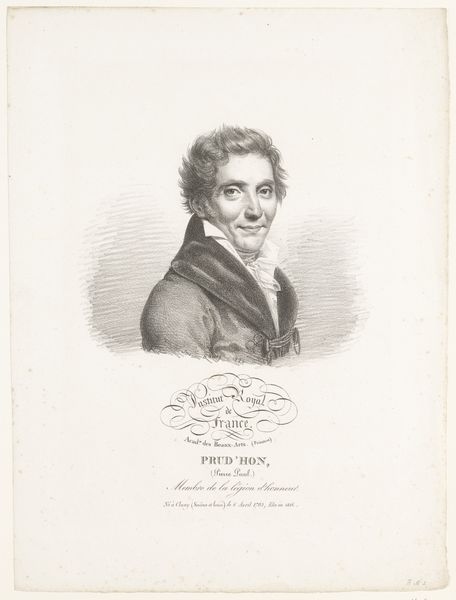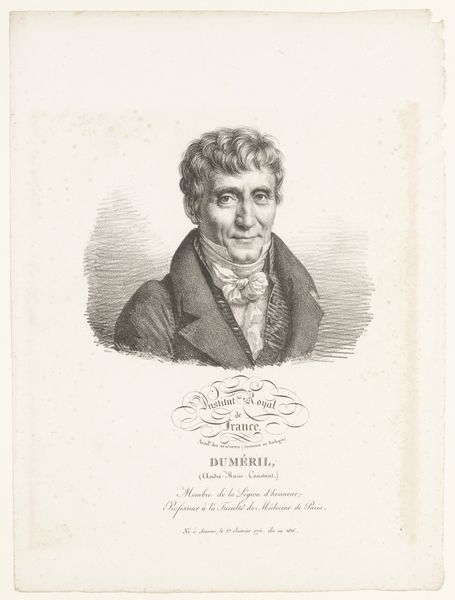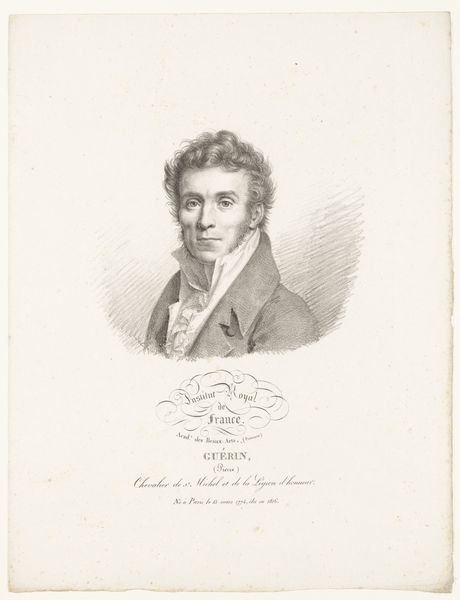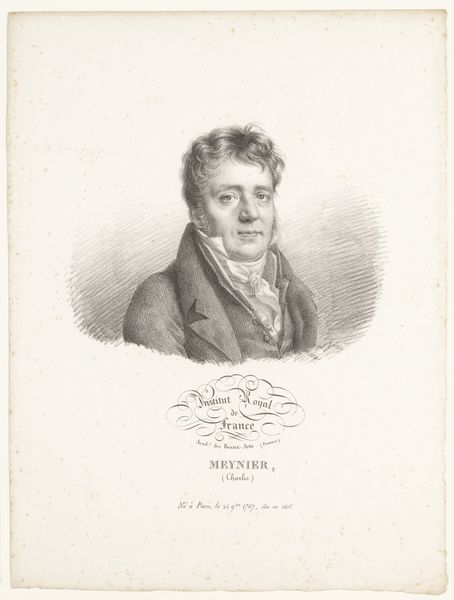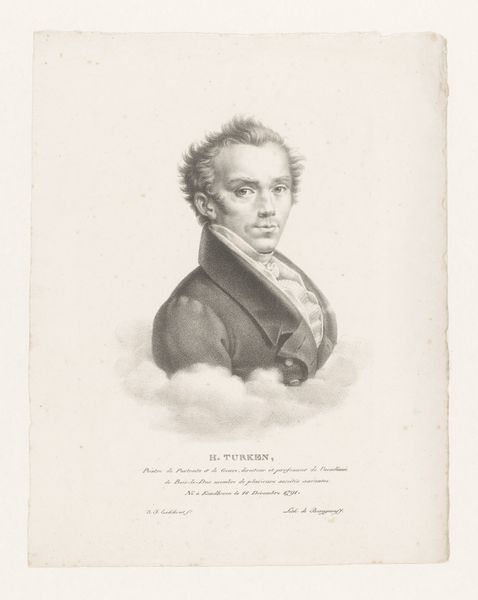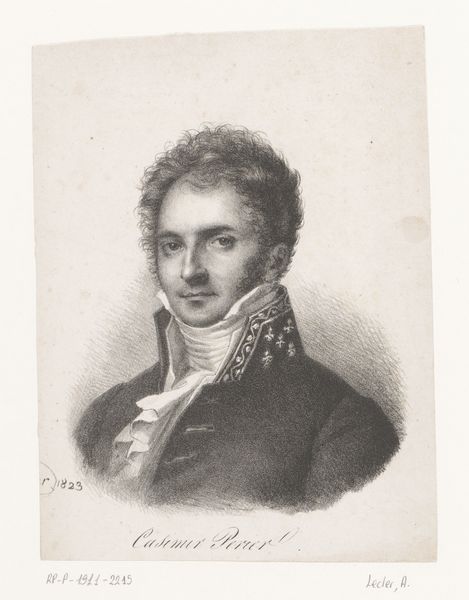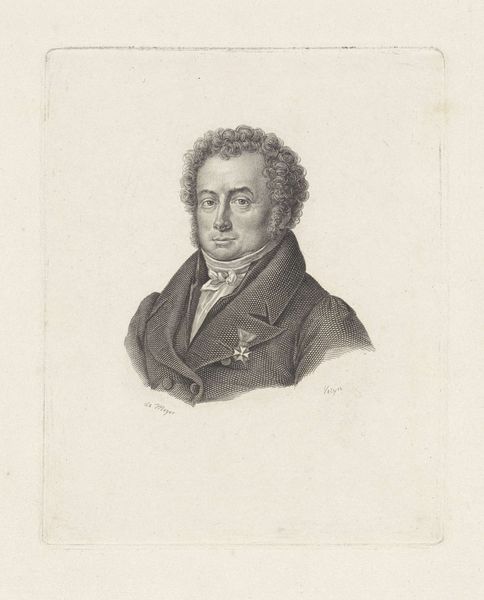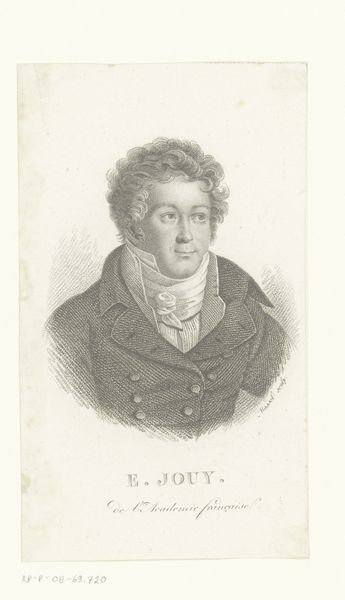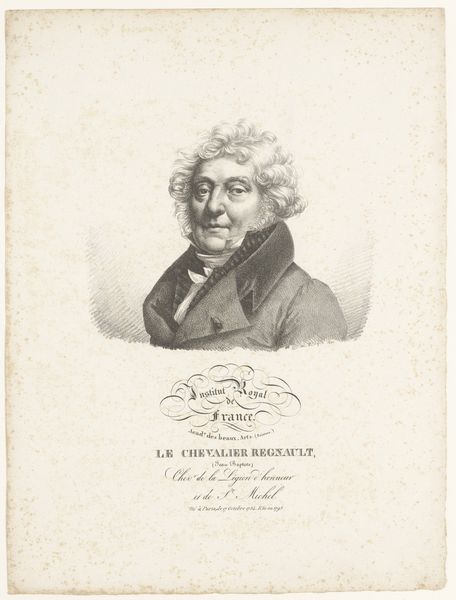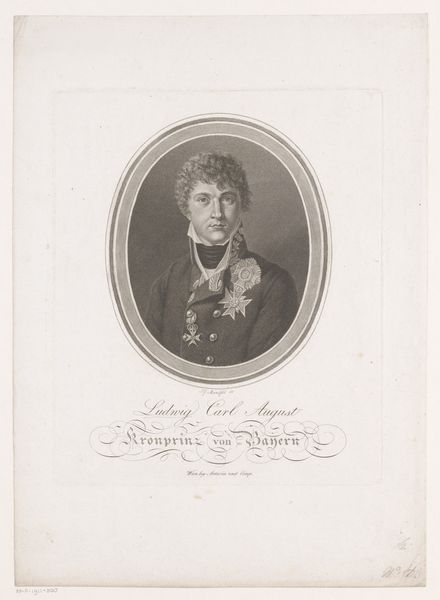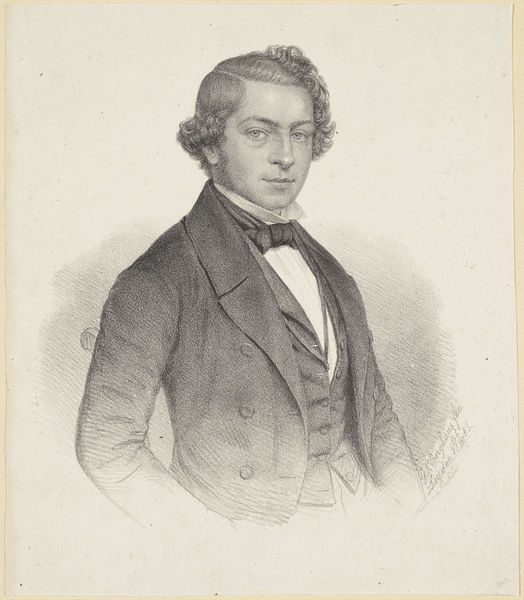
print, engraving
#
neoclacissism
# print
#
academic-art
#
engraving
Dimensions: height 354 mm, width 274 mm
Copyright: Rijks Museum: Open Domain
Curator: Here we have Julien-Léopold Boilly's "Portret van de dichter Louis-Jean-Népomucène Lemercier," created around 1820. It’s an engraving, a print. Editor: It strikes me as an image of quiet ambition. A portrait, sharply rendered in monochrome, yet there's an undeniable air of determination in Lemercier's gaze. What sort of techniques did Boilly employ? Curator: As an engraving, the piece depends on the artist's skill in manipulating line. The fine details are etched onto a metal plate, then inked and pressed onto paper. Look at how the varying density of lines create shadows and volume. It also signals the democratization of art through printmaking during that period, and that shifts who art serves in society. Editor: Indeed, it feels like an attempt to elevate the sitter. The gaze directed at the viewer, the carefully styled hair... it all hints at a constructed image. Considering Lemercier was a poet, what symbolism might we glean from this formal portrayal? Curator: Think of what prints represented in that era. Widespread access, mass production. It makes this very academic portrait something far more accessible, intended to influence, possibly sell volumes. Boilly, through his craftsmanship, makes art consumable. Editor: Fascinating, how the act of reproduction can imbue an image with a symbolic weight of its own. The choice of academic style grounds Lemercier, the sitter, in intellectual tradition, aligning him with an established canon. One wonders how Lemercier perceived himself. Curator: Well, to add to that, printmaking involved collaboration between artists, publishers, and distributors, reflecting a broader network of cultural production at the time. The paper stock, ink quality, and production techniques would have all affected the image’s reception. Editor: True. Considering both form and symbolism enriches our viewing so. The material speaks as clearly as the depicted image itself. Curator: Exactly. An artwork's physical properties inform our interpretation and offer insights into its cultural history. Editor: I concur completely. An enlightening blend of material reality and iconographic insight, a powerful tool for understanding our collective visual past.
Comments
No comments
Be the first to comment and join the conversation on the ultimate creative platform.
